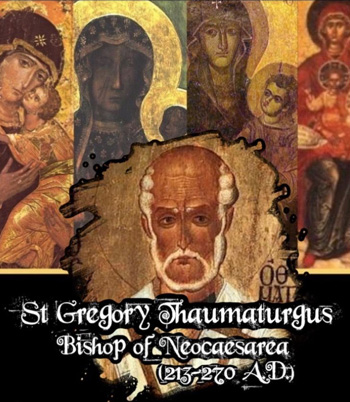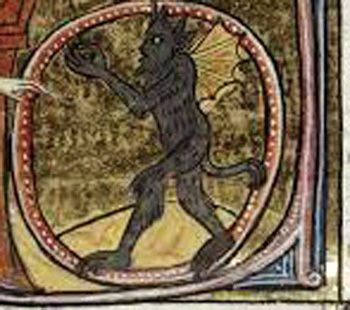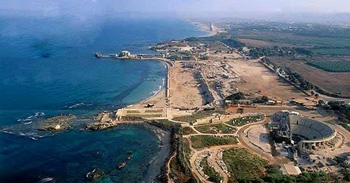Stories & Legends
 |
 |
 |
 |
 |
 |
 |
‘Gregory to Satan: Return’
In the 3rd century, the city of Neocæsarea was rich, large and populous, but it was so deeply buried in vice and so miserably addicted to superstition and idolatry that it seemed to be the place where Satan had fixed his seat. Thus, Christianity had as yet scarcely been able to approach its environs, though it was in a nourishing condition in many parts of Pontus.
 Then it was that Gregory – known today as St. Gregory Thaumaturgus (the Wonder-Worker) – was consecrated Bishop of his native Neocaesarea. Animated with zeal and charity, he applied himself vigorously to the charge committed to him to evangelize the region, and God was pleased to confer upon him an extraordinary power of working miracles.
Then it was that Gregory – known today as St. Gregory Thaumaturgus (the Wonder-Worker) – was consecrated Bishop of his native Neocaesarea. Animated with zeal and charity, he applied himself vigorously to the charge committed to him to evangelize the region, and God was pleased to confer upon him an extraordinary power of working miracles.
St. Gregory of Nyssa gives us the following account of but a few of these miracles:
As the Saint was returning from the city to the wilderness, a violent rain obliged him to take shelter in a heathen temple, the most famous in the country because of the oracles and divinations delivered there. At his entrance he made the Sign of the Cross several times to purify the air, and then spent the night there in prayer with his companion of trip, according to custom.
The next morning he pursued his journey, and the idolatrous priest came to perform his usual superstitions in the temple. But the devils declared they could stay there no longer, being forced away by the man who passed the last night there. After several vain attempts to bring those powers back, the pagan priest hastened after the Saint, threatening to carry his complaints against him to the magistrates and to the Emperor.
St. Gregory, without the least emotion, told him that with the help of God he could drive away or call the devils when he pleased. When the idolater saw he disregarded all his menaces, and heard that he had a power of commanding demons at pleasure, his fury was turned into admiration, and he entreated the Bishop, as a further evidence of the divine authority, to bring the demons back again to the temple.
 The Saint complied with his request, and dismissed him with a scrip of paper, upon which he had written, “Gregory to Satan: Return.” This being laid upon the altar, and the usual oblation made, the demons returned, bitterly and with great resentment, to admit their forced obedience to the Saint, and then gave their answers as usual.
The Saint complied with his request, and dismissed him with a scrip of paper, upon which he had written, “Gregory to Satan: Return.” This being laid upon the altar, and the usual oblation made, the demons returned, bitterly and with great resentment, to admit their forced obedience to the Saint, and then gave their answers as usual.
The pagan priest, surprised at what he saw, went after the holy Bishop, and begged he would give him some account of that God whom his gods so readily obeyed.
Gregory explained to him the principles of the Catholic Faith. The pagan priest was shocked at the doctrine of the Incarnation, but the Bishop told him that great truth was not to be enforced by words or human reasoning, but by the wonders of the divine power.
The priest, hereupon pointing to a great stone, desired the Saint to command that it should change its place to another, which he named. St. Gregory did so, and the stone obeyed, by the power of Him who promised His disciples that by faith they should be able to remove mountains.
The priest was converted by these miracles, and, forsaking his house, friends, and relations, gave himself up to the instructions of Divine Wisdom.



St. Gregory Thaumaturgus vigorously evangelized Neocaesaria, city reconstructed below

St. Gregory of Nyssa gives us the following account of but a few of these miracles:
As the Saint was returning from the city to the wilderness, a violent rain obliged him to take shelter in a heathen temple, the most famous in the country because of the oracles and divinations delivered there. At his entrance he made the Sign of the Cross several times to purify the air, and then spent the night there in prayer with his companion of trip, according to custom.
The next morning he pursued his journey, and the idolatrous priest came to perform his usual superstitions in the temple. But the devils declared they could stay there no longer, being forced away by the man who passed the last night there. After several vain attempts to bring those powers back, the pagan priest hastened after the Saint, threatening to carry his complaints against him to the magistrates and to the Emperor.
St. Gregory, without the least emotion, told him that with the help of God he could drive away or call the devils when he pleased. When the idolater saw he disregarded all his menaces, and heard that he had a power of commanding demons at pleasure, his fury was turned into admiration, and he entreated the Bishop, as a further evidence of the divine authority, to bring the demons back again to the temple.

St. Gregory commands Satan: ‘Return’
& he is forced to obey
The pagan priest, surprised at what he saw, went after the holy Bishop, and begged he would give him some account of that God whom his gods so readily obeyed.
Gregory explained to him the principles of the Catholic Faith. The pagan priest was shocked at the doctrine of the Incarnation, but the Bishop told him that great truth was not to be enforced by words or human reasoning, but by the wonders of the divine power.
The priest, hereupon pointing to a great stone, desired the Saint to command that it should change its place to another, which he named. St. Gregory did so, and the stone obeyed, by the power of Him who promised His disciples that by faith they should be able to remove mountains.
The priest was converted by these miracles, and, forsaking his house, friends, and relations, gave himself up to the instructions of Divine Wisdom.

Excerpt from The Life of St. Gregory Thaumaturgus, by St. Gregory of Nyssa,
Eusebius, l. 6, c. 23; St. Jerom in Catal. and the saint’s Oration to Origen;
also St. Basil, l. de Spir. Soc. c. 29, ep. 62–65.
Posted November 26, 2022
Eusebius, l. 6, c. 23; St. Jerom in Catal. and the saint’s Oration to Origen;
also St. Basil, l. de Spir. Soc. c. 29, ep. 62–65.
Posted November 26, 2022






